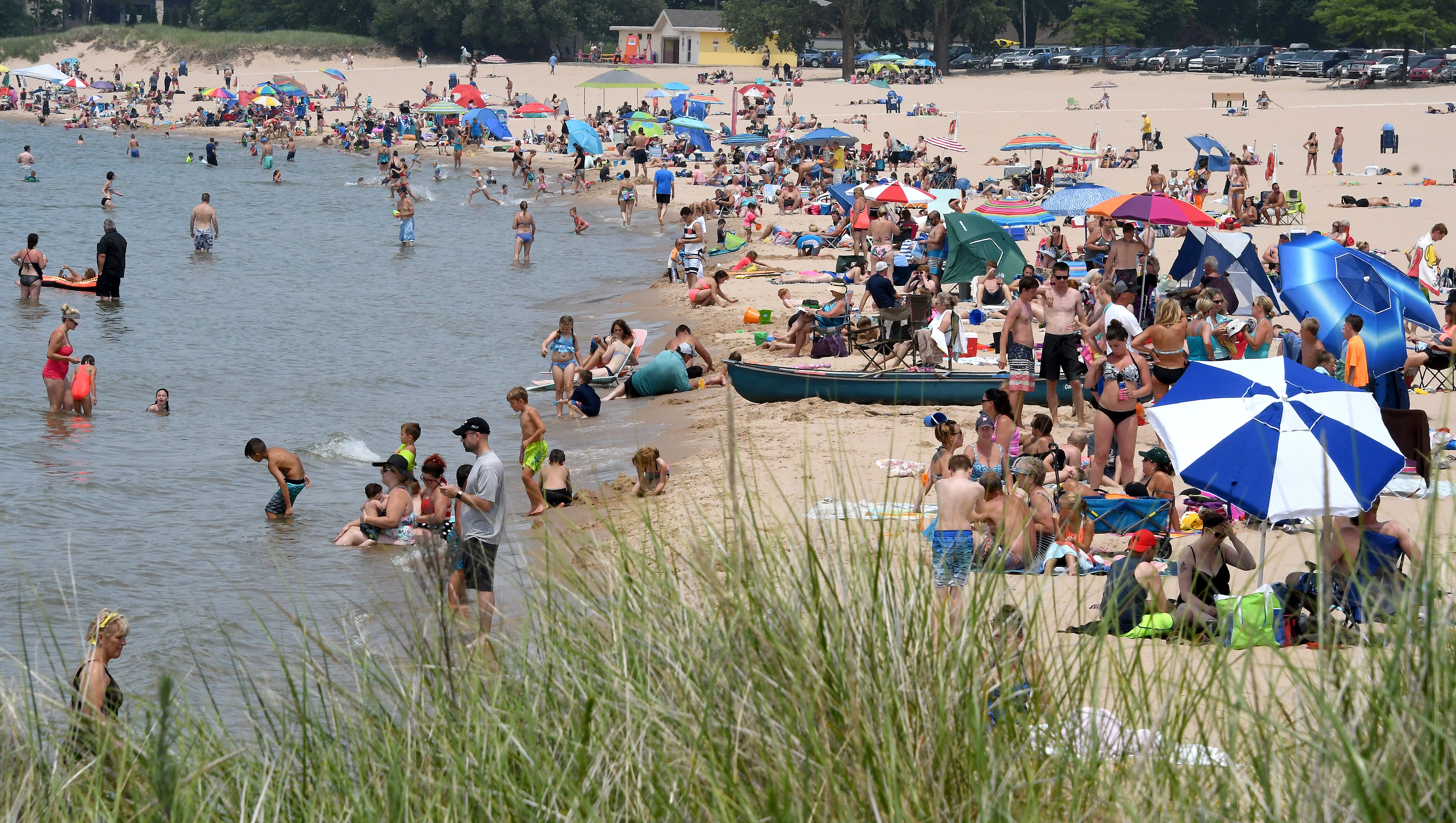Near-tragedy inspires Great Lakes anti-drowning effort
 Blake Alsup
Blake Alsup
Nearly six years ago, Jamie Racklyeft was swimming in Lake Michigan off Leland when he got caught in a rip current and almost drowned. He later learned that a 16-year-old boy swimming in the same area 45 minutes later had been swept up in the same rip current and died.
Shaken by his near-death experience and the teen's drowning, Racklyeft, 54, has dedicated himself to spreading the word about the dangers of rip currents in the Great Lakes and how to survive if you find yourself trapped in one.
“I decided to channel that into trying to end drowning, trying to make sure no one else finds out the hard way about rip currents in the Great Lakes,” he said.

He began planning events to connect individual organizations involved in water safety from all eight Great Lakes states and Ontario with the common goal of ending drowning on the lakes.
Since 2015, he's been executive director of the Great Lakes Water Safety Consortium, a nonprofit with more than 300 volunteers working to create a standard set of water safety recommendations. The consortium is based in Ann Arbor, where Racklyeft is communications director for the Michigan Institute for Clinical and Health Research at the University of Michigan.
The group has a steep challenge. According to data compiled by the Great Lakes Surf Rescue Project, a partner in the consortium, several dozen people drown in the lakes each year -- 625 deaths occurred from 2010 to 2017.
Of the drownings during that time, nearly half happened in Lake Michigan. So far this year, 37 Great Lakes drownings have been recorded.
Dave Benjamin, executive director of public relations and project management for the Great Lakes Surf Rescue Project, said there is a stigma around drowning, causing people to believe it can’t happen to them.
“When drowning happens, the public perception is to blame the victim, blame the parents or caregivers or blame it on Darwinism,” Benjamin said. “Then the stigma of drowning gives people the false sense of security that drowning wouldn’t happen to me because I wouldn’t be that stupid or I wouldn’t be that bad parent.”

He said statistics show 66 percent of drowning victims are good swimmers.
“Even two- and three-foot waves can generate rip currents that are more powerful than Michael Phelps from the Olympic swim team can fight,” Racklyeft said. “So we say don’t even try to fight it.”
Instead, the Water Safety Consortium encourages people caught in a rip current to “flip, float and follow” -- flip onto your back, float and follow the path of least resistance back to shore.
Under the guidance of Racklyeft's guidance, the consortium has worked to get updated warning signs and rescue equipment on Great Lake beaches.
“Jamie has done a fantastic job with everything he’s doing with the Great Lakes Water Safety Consortium,” Benjamin said. “He’s kind of the glue that’s been holding all of these advocates together, you know, working on the same common message."
Years later, Racklyeft still remembers the day he almost drowned -- Aug. 30, 2012 -- in vivid detail.
Seeking solace during a tough time, he had traveled north by himself and ended up at Van's Beach in Leland, one of his favorite places.
After having lunch and reading awhile, he saw people playing in the surf and decided to go in himself.
He soon noticed the water was up to his waist, then his chest. As he tried to walk back to shore, he realized he was stuck in a rip current.
Racklyeft said he flipped over on his back and tried to swim to the side -- the right thing to do in that situation -- but 4 to 5-foot waves keep crashing into him, pushing him “100 yards or so” from the shore.

“After a while, I started to get really exhausted and I just came to this realization that ‘Oh my God, this is how I’m going to die,’” Racklyeft said.
Two people in a kayak rescued him.
“Everything went dark and everything got quiet,” Racklyeft said. “I felt like I was being carried. And then I felt like I was being sat down in the warm sand and I can’t see anything but I’m starting to hear kind of muffled voices. And they’re asking me if I’m okay and I’m asking them if I’m dead.”
An ambulance took him to a hospital, where Racklyeft remembers an EMT telling him “you just need to pay this forward” -- the impetus for his ongoing educational efforts.
Saturday, a grateful Racklyeft is returning to the site of his near-drowning, this time to get married. He and his fiance, Susie McGraw, dated more than 30 years ago, went their separate ways, then reconnected a few years ago, Racklyeft said. They agreed the shoreline in Leland would be a fitting place for their wedding.
“It just kind of made sense because it’s so symbolic of second chances to go back there where I almost died and kind of start this new life together,” Racklyeft said.
“It’s a second chance at life and a second chance at love.”
malsup@detroitnews.com